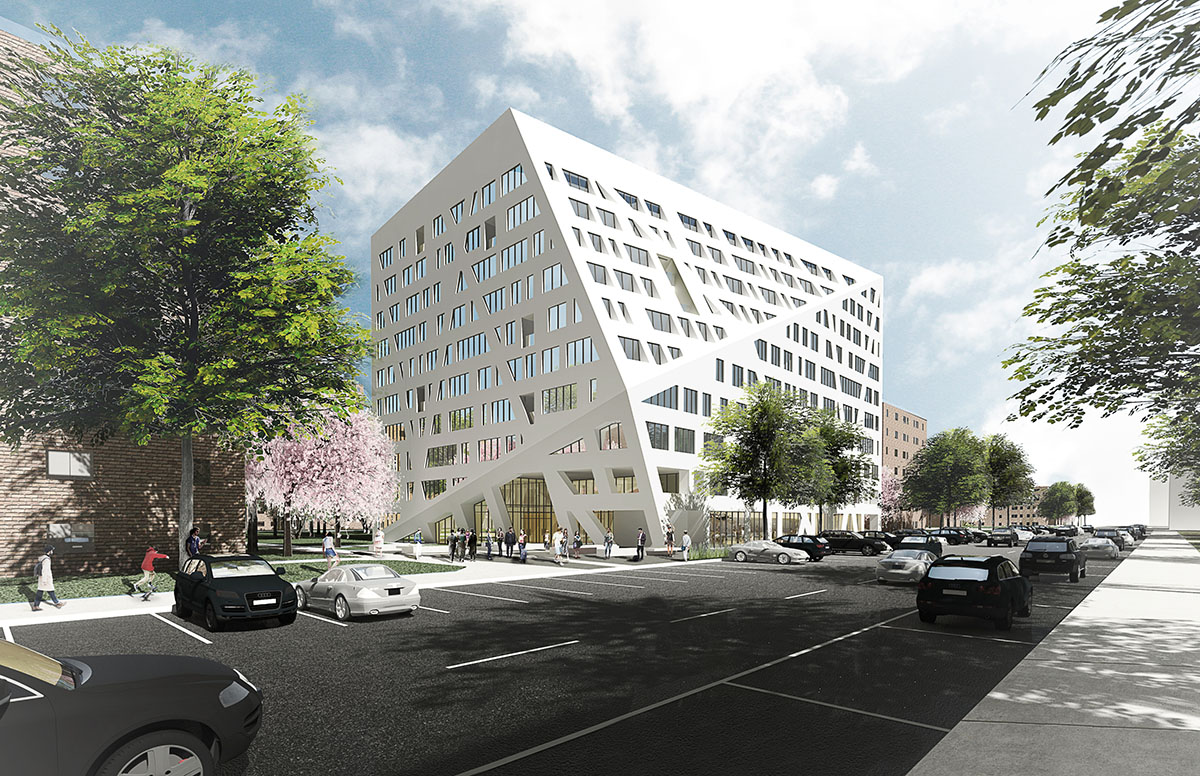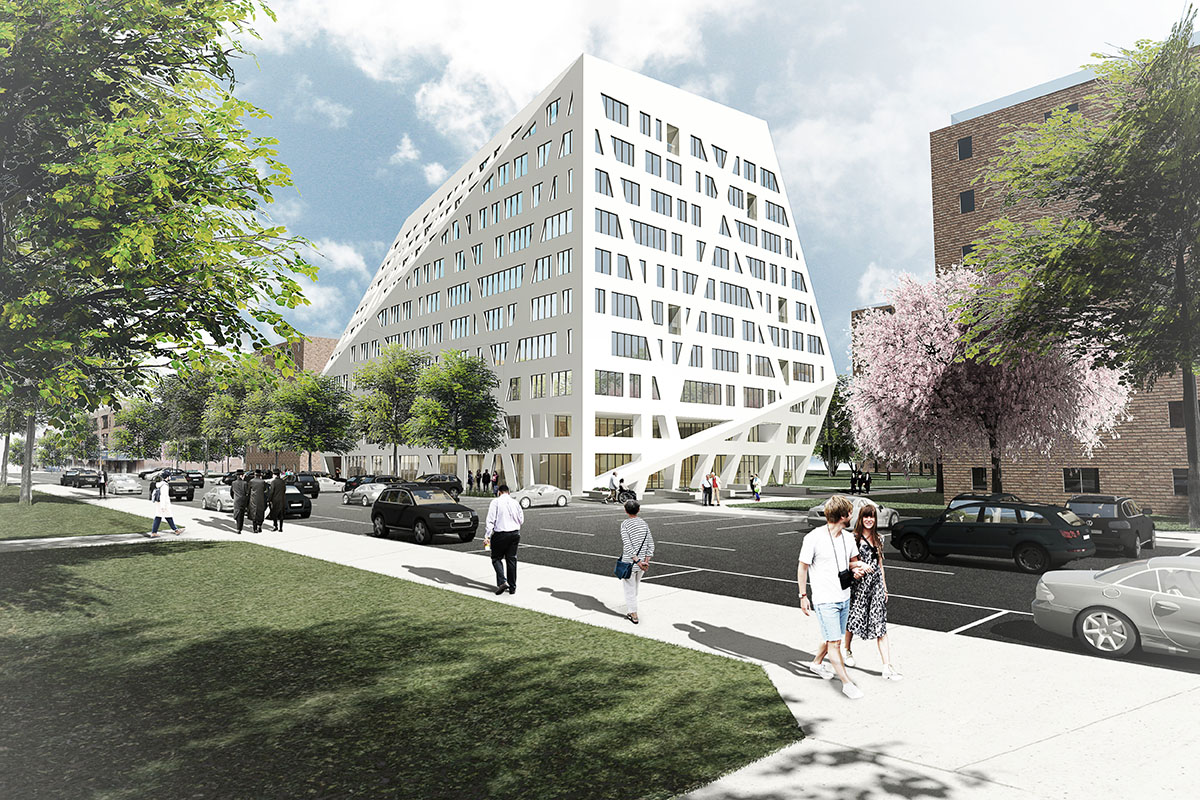Submitted by WA Contents
Studio Libeskind's angular affordable housing will serve to extremely low-income individuals
United States Architecture News - Apr 10, 2018 - 01:37 17536 views

Daniel Libeskind's firm Studio Libeskind has unveiled images for a new affordable senior housing in Bed-Stuy, Brooklyn, which will serve to "extremely low, very low, and low-income individuals" for the duration of the 99-year ground lease.
Developed in collaboration with New York City Housing Authority (NYCHA), Selfhelp Community Services, RiseBoro, and Urban Builders Collaborative/Lettire, the new building will include 197 affordable housing units and provide more than 10,000 square feet (929 square meters) of community space for residents at the Sumner Houses in the Bed-Stuy neighborhood of Brooklyn.
The 10-storey building will be erected on a park-like plot of the existing Sumner Houses campus in the Bed-Stuy neighborhood of Brooklyn, as part of Housing New York 2.0’s “Seniors First” program, a commitment to build senior housing on NYCHA-owned land.
The new affordable senior housing will be the first New York project of the studio, although the firm designed the masterplan for the World Trade Center in New York. Construction is scheduled to be completed by 2020.
"I am extremely grateful and inspired by this opportunity to contribute to the Bed-Stuy community,” said architect Daniel Libeskind.
“I believe I can speak for our entire team that our goal is to serve the senior community by creating homes that give a sense of civic pride and create more much needed affordable housing in New York City," added Libeskind.

The building will feature 129,928 square feet (12,070 square meters) of affordable senior housing within 10 stories, coupled with a ground-level community facility of 10,285 square feet (955 square meters) along Marcus Garvey Boulevard.
The studio's design scheme features a dynamic, yet rational, geometric form that is interrupted with a pattern of open and solid elements.
"The project's goal was to create an active interaction with the street and surrounding context. Bold diagonal lines wrap the building at angles that rise from the ground, creating a folding form that breaks down the massing at street-level," said the firm in its project brief.
A glazed entrance lobby creates a transparent and open connection to the street. The residential facility is organized as a courtyard building, with corridors looking inward toward a central green public space.
All images courtesy of Studio Libeskind
> via Studio Libeskind
